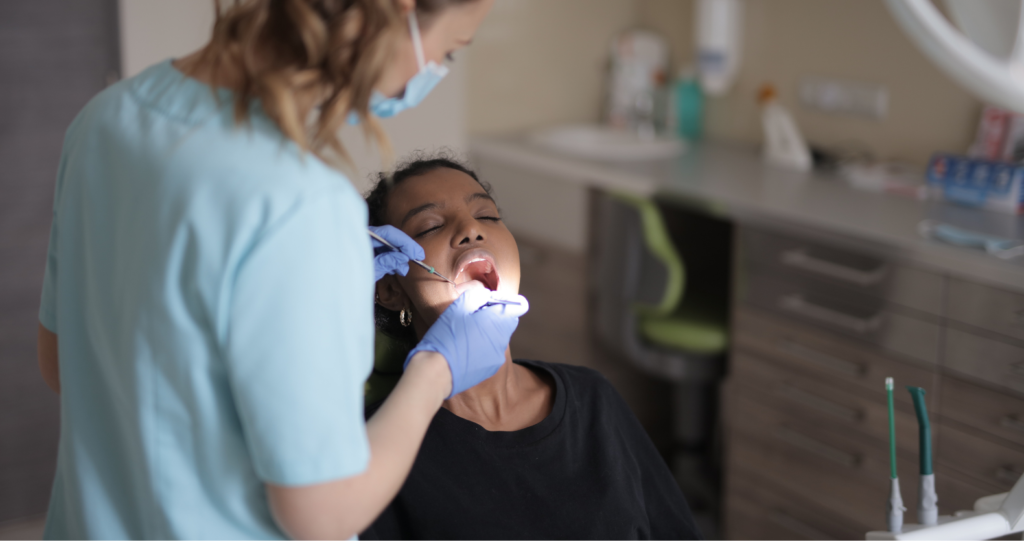
How To Extract A Broken Tooth At Home
For a new tooth, why would anyone want to pull a tooth? However, tooth extraction is such a sensitive activity that requires great care and advanced preparation. Seeing a dentist is always the safest choice. However, some individuals resort to DIY tooth extraction when professional care isn’t immediately available. In this blog, we will learn when you should consider extract a broken tooth at home, how to get ready for the procedure, and the methods for safely performing a tooth extraction.
How To Extract A Broken Tooth At Home
For broken or damaged teeth, tooth extraction can be done at home under certain conditions. Crucially, it’s vital to know when it’s time to make the move and when it’s best to seek professional help. However, you should do everything in your power to prepare correctly and understand the steps you need to take in order to make the process as safe as possible.
When Should You Consider Tooth Extraction?
Can a broken tooth be pulled out at home?
The unsafest option is to remove the tooth at home, and even if you try to do it at home, this can only be considered in an emergency. The lack of proper tools and sterilization can lead to infections, damage to the adjacent tissues, and difficulties in the extraction process. When in doubt, fly to a dentist for professional care.
What Are The Dangers Of Extracting a Tooth At Home?
Tooth extraction is risky at home. It can harm neighboring teeth, cause damage to tissue, cause excessive gum bleeding, and cause infection. Without professional expertise, the tooth may also break into smaller fragments, making the removal procedure more complex.
Tooth extraction is an option when a tooth is so damaged or chipped that it causes constant pain or infection or when the damage cannot be resolved. If a cavity or crack has reached the root or if the tooth is loose and cannot be saved, it will have to be extracted. It’s also advised if the tooth is causing significant gum or jaw problems that are not healing with other measures.

Signs That A Broken Tooth Needs To Be Removed
If a broken tooth is severely cracked, consistently painful, or infected, the tooth may have to be extracted. Symptoms such as constant swelling, severe tooth pain, or a tooth that cannot be repaired with fillings or crowns may suggest it’s time for extraction. If the tooth cannot be saved, extraction may offer relief and safeguard against additional complications.
When To Seek Professional Help Instead Of Diy Extraction
However, if a tooth is severely decayed, infected, or in a sensitive position, professional dental assistance should be sought rather than attempting to do it yourself. And, if you suffer excessive pain you can’t control, fever, or excessive swelling, it’s best to visit a dentist to avoid complications like infection or damage to surrounding teeth and tissues.
Preparation Before Tooth Extraction
So, before you try to pull out a broken tooth, make sure the area is clean and that you’ve taken all the necessary precautions to reduce discomfort and prevent infection.
Sterilizing Tools And Hands
All tools and equipment touching the tooth must be sterilized to avoid introducing harmful bacteria into the mouth. Wash your hands well and sanitize any tools you intend to use (e.g., plyers, dental forceps) with boiling water or antiseptic wipes. Sterility minimizes the threat of infection during and after extraction.
Numbing The Area With Ice Or Oral Gels
To avoid pain, numb the afflicted area before pulling out the tooth. You can ice the outside of your cheek or use over-the-counter oral gels containing a numbing agent such as benzocaine. Apply the numbing agent and wait a few minutes until the area is adequately desensitized, then begin the extraction process.
Methods For Extracting A Broken Tooth At Home
If you are confident removing the broken tooth yourself at home, you can use some methods. Note that tooth extraction should only be considered in specific situations, and proper safety measures should always be taken.
Using A String And Quick Pull Technique
This method uses a strong string or floss tied around the ruptured tooth, then a swift tug. It’s an old-school way of extracting a tooth, and it can work well when a tooth is already loose and the fracture is minimal.
Step-By-Step Process
- String or dental floss (cut 12 inches long)
- Wrap one end of the string around the broken tooth so that it will stay put and not pull off.
- Slowly pull on the string to pull out the tooth. When you believe the tooth is ready to be removed, pull fast and steady.
- Just keep the string in your grip and pull but with controlled force.
- After removing the tooth, make sure to clean the area thoroughly.

Precautions To Take
Applying too much force can fracture the tooth into multiple pieces or damage adjacent tissue. If you experience emotion that you resist or that feels painful, stop or suspend this practice and get professional support.
Wiggling The Tooth Until It Comes Loose
If the broken tooth is already very loose, you might be able to wiggle it free by hand or use a dental tool to perform the task.
How To Loosen A Tooth Safely
- Make sure you wash your hands and that your teeth are clean.
- Lightly grasp the loose tooth with clean fingers or sanitized dental pliers.
- Gently rock the tooth back and forth. If it’s already loosened, it should come out without too much force.
- Wiggle the tooth in different directions until it’s out.
- If you do have to remove the tooth, clean the area well.
Pain Management And Aftercare
If you successfully obtained a broken tooth from home, then you have to control pain and provide adequate aftercare in order to avoid complications.
Controlling Bleeding And Swelling
It is customary to bleed after the treatment. To stem the bleeding, grind your teeth on a clean gauze pad or cotton. Apply firm pressure for 30 minutes or until the bleeding stops. To reduce swelling, place an ice pack on the outside of your cheek for 15-minute intervals.
Natural Remedies For Pain Relief
For pain relief, try natural remedies such as clove oil, which has analgesic properties, or saltwater rinses. Gargling warm salt water can cleanse the area and minimize the risk of infection.
Signs Of Infection To Watch For
After the procedure, look for signs of infection, such as puffiness, continuing pain, and/or pus oozing from the extraction site. If any of these happen, seek professional dental care as soon as possible to avoid complications such as an abscess.
Conclusion
Removing a fractured tooth at home may sound like a viable option in an emergency, but the associated risks must be considered. Tooth extraction at home should only be a last resort. If the case is complex or you are uncertain about the procedure, always the safest way to go is to consult with a professional. Remember, aftercare is essential to prevent infection and proper healing. For your long-term dental health, it’s always best to consult your dentist’s office to discuss the best options for tooth removal and repair.
For expert advice and reliable treatment, visit Dental Faith. We want to keep your smile healthy and pain-free! Call us for a consultation today.
FAQs
Is it safe to remove a broken tooth at home?
Taking out a broken tooth at home is not really safe, and it should only be done during emergencies. Every extraction should be done with the proper tools and sterilization, and failing to do so could lead to infection, damage to surrounding tissues, and complications. Always consult your dentist before using any home remedies.
What are the risks of pulling a tooth at home?
Risks of doing an extraction at home involve damaging nearby teeth, injuring neighboring tissues, hemorrhage, and developing an infection. In the absence of professional expertise, there’s also the likelihood that the tooth could break into smaller parts, making the removal process more difficult.
How to ease the pain before removing a broken tooth?”
If a tooth breaks, ice applied to the area can help to reduce swelling before the tooth is pulled. Over-the-counter numbing gels or oral pain relievers containing benzocaine can temporarily numb the area, making the extraction process less painful.
